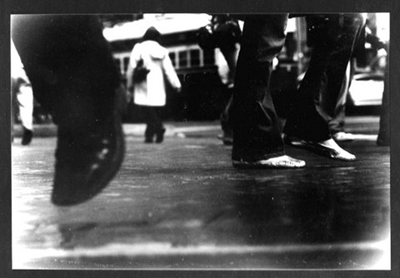All Nonfiction
- Bullying
- Books
- Academic
- Author Interviews
- Celebrity interviews
- College Articles
- College Essays
- Educator of the Year
- Heroes
- Interviews
- Memoir
- Personal Experience
- Sports
- Travel & Culture
All Opinions
- Bullying
- Current Events / Politics
- Discrimination
- Drugs / Alcohol / Smoking
- Entertainment / Celebrities
- Environment
- Love / Relationships
- Movies / Music / TV
- Pop Culture / Trends
- School / College
- Social Issues / Civics
- Spirituality / Religion
- Sports / Hobbies
All Hot Topics
- Bullying
- Community Service
- Environment
- Health
- Letters to the Editor
- Pride & Prejudice
- What Matters
- Back
Summer Guide
- Program Links
- Program Reviews
- Back
College Guide
- College Links
- College Reviews
- College Essays
- College Articles
- Back
Apartheid and Resentment
For centuries, man has attempted to be superior to others through the differentiation of looks, beliefs, and social class. Some of these attempts at superiority include demanding acts of respect, such as bowing down to samurai in ancient Japan. Sometimes degrading language and actions occur, similar to the time of colored slavery. Other “superior” men will go as far as physically segregating the targeted group of people by building amenities purely for the target's use. Attempts at supremacy such as these divide the races in the town of Bayonne in the novel, A Lesson Before Dying.
In Bayonne, as in many towns in southern history, white men and women demand respect from their inferior colored counterparts. No conversation is had without the colored person addressing the white man or woman as “sir” or “ma'am,” respectively. This habit is expressed consistently throughout the novel, such as when Tante Lou, Miss Emma, and Grant Wiggins ask for Henri Pichot's permission to see Jefferson in the jail where he is held. However, these three characters do not address Pichot as such out of respect. They do so knowing it is demanded of them. When this occurs between all colored and white people in town, it creates resentment toward the white population and degradation toward the colored population.
This resentment and degradation is fed through racist words and actions committed by the superior race. Simple words are an ideal exemplification of humiliation, such as calling a grown black man a “boy.” Another ignominious example is when the superintendent, Dr. Joseph, checks a schoolchild’s teeth, resembling when a white master would inspect a colored slave's teeth in the past. These actions are taken precisely for the purpose of making the colored person feel inferior to the white person. In this way, the white man or woman maintains their position on a pedestal built from apartheid.
Separation of race may be taken so far as to create a physical form of it, as is the case in Bayonne. Schools, clubs, and buildings of the sort are specified for individual races, white or colored, and are built in certain areas. The white amenities are built uptown, signifying their dominance. Conversely, amenities for colored men and women are built downtown, away from the white population, signifying their mediocrity. When the white and colored populations must cross paths, comforts for the colored population of Bayonne, such as bathrooms, are built in the lowest levels of the building or outside. This physical separation increases the harsh reality of segregation and exclusion from normalcy in the town of Bayonne.
From language to actions to the physical separation of races, daily life feeds the fire of racial division in Bayonne throughout A Lesson Before Dying. When the white population of the town demands respect, it simultaneously demands resentment. Similarly, when the colored race is physically withdrawn from the white population, that separation is manifested in mannerisms and beliefs. It is these hidden consequences that crudely dig the town of Bayonne deeper into the hole of apartheid.

Similar Articles
JOIN THE DISCUSSION
This article has 0 comments.
